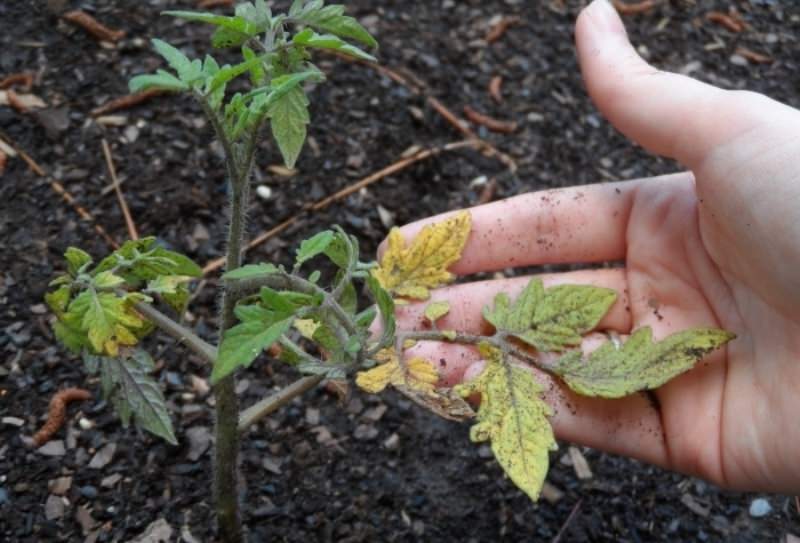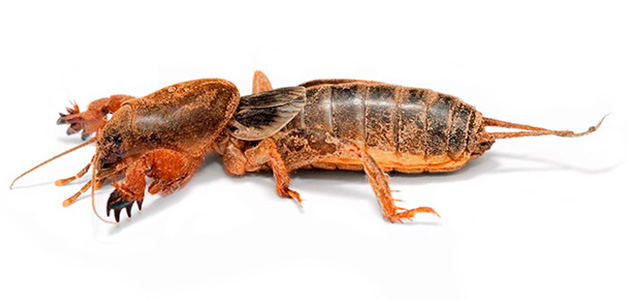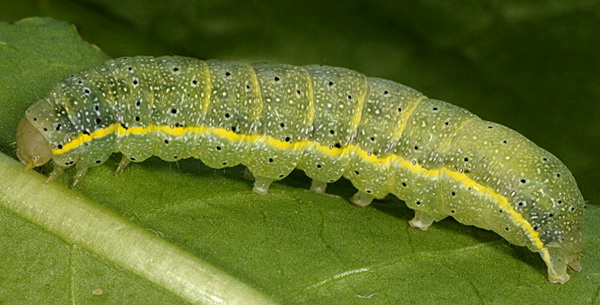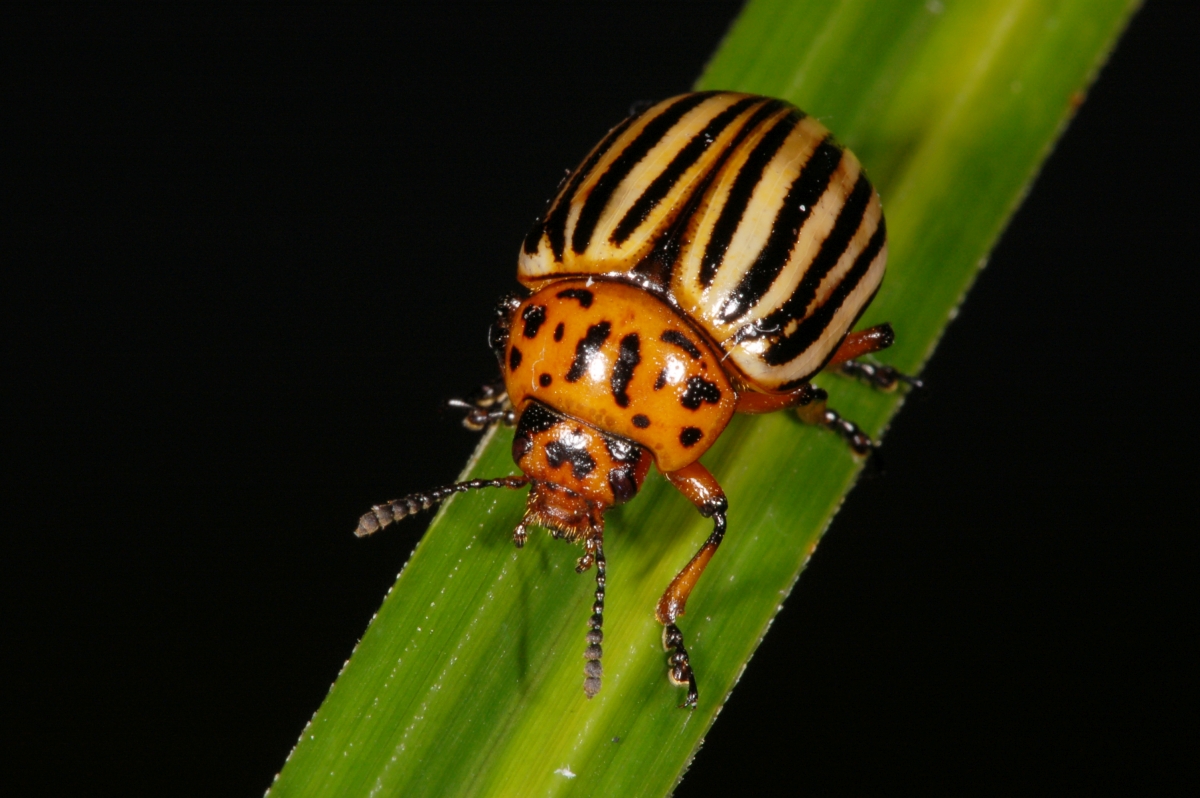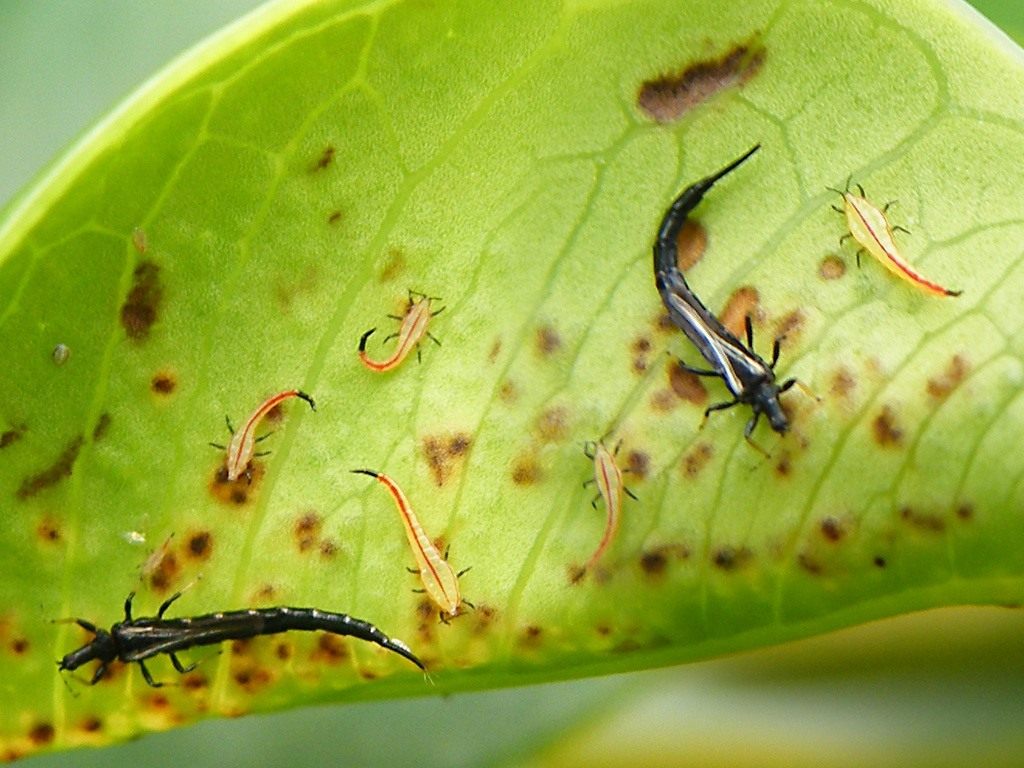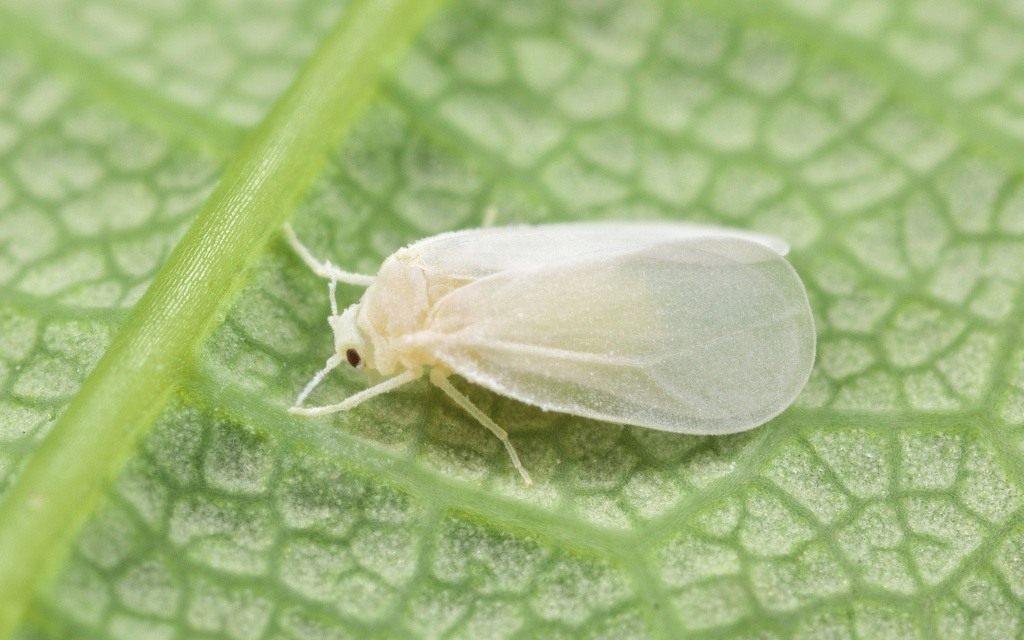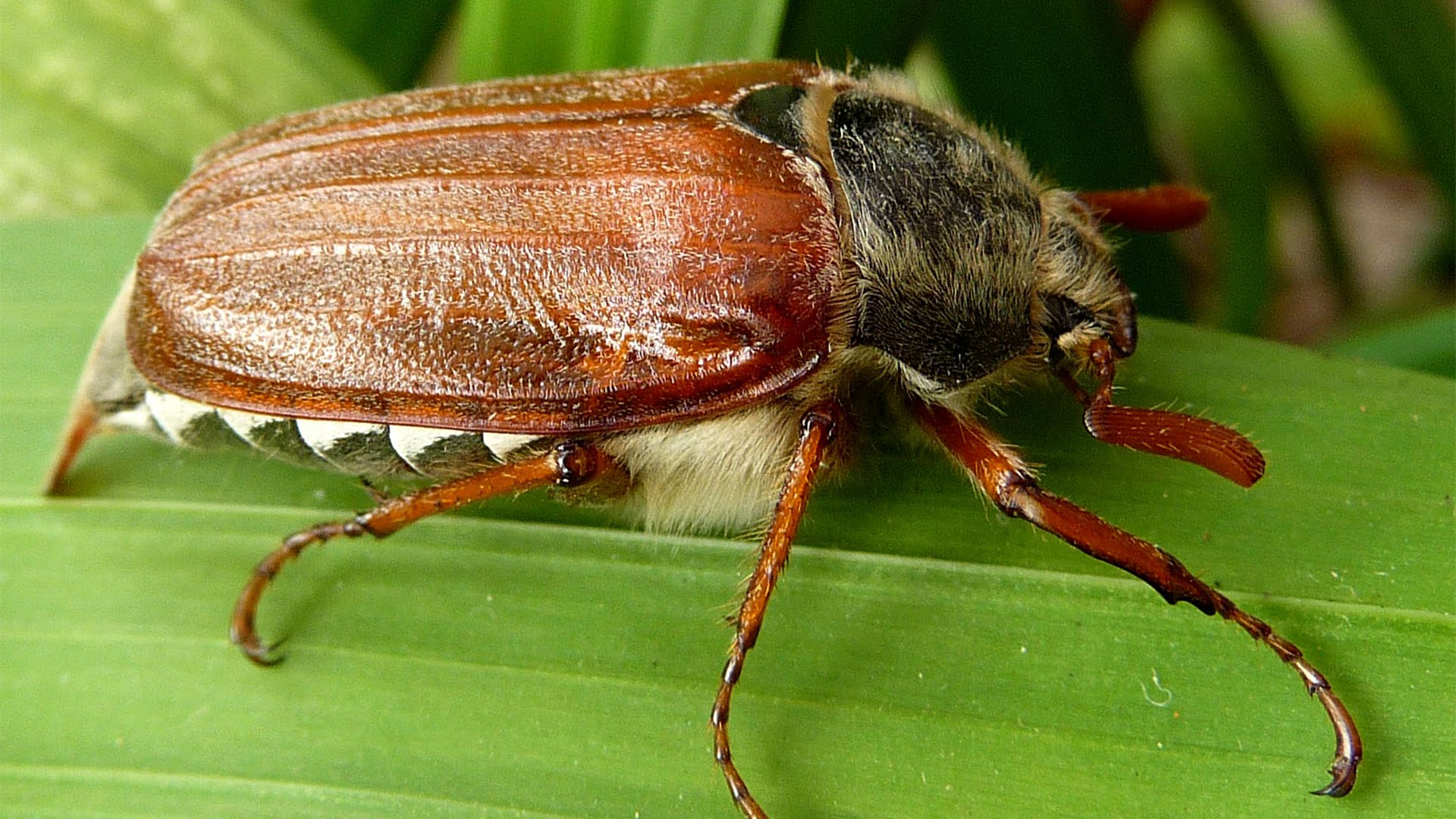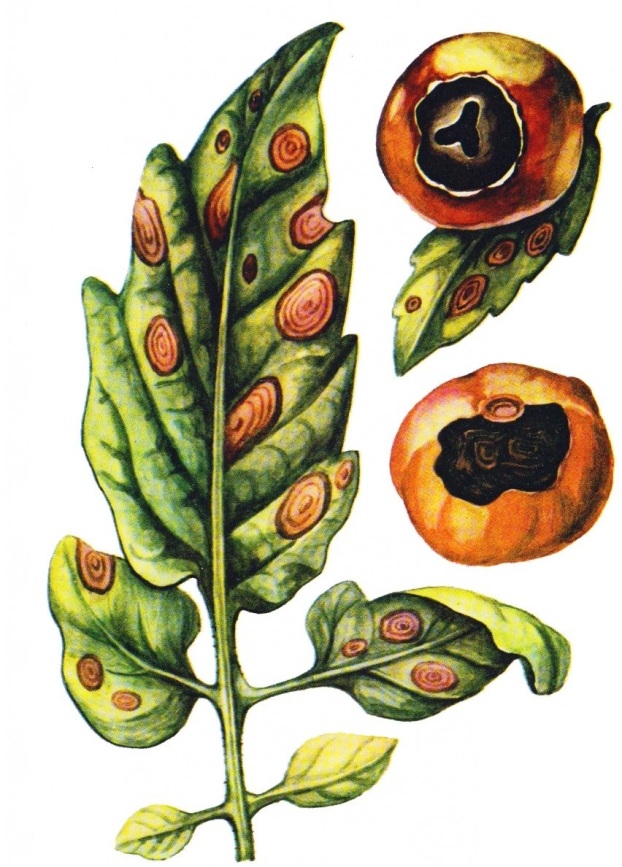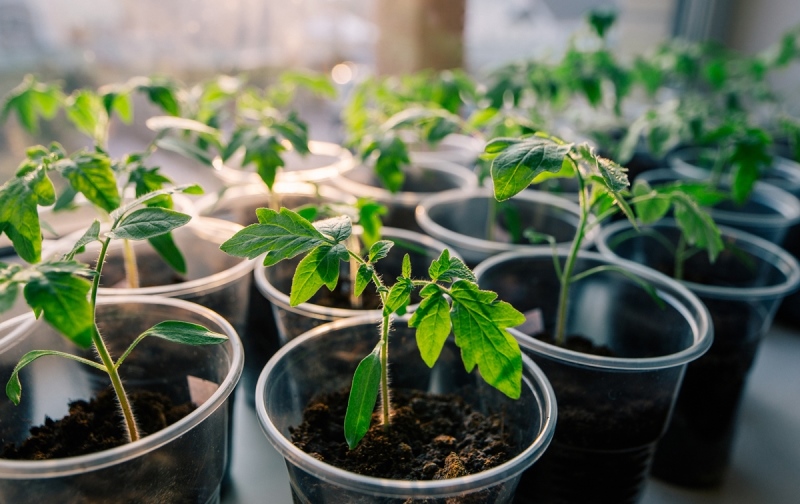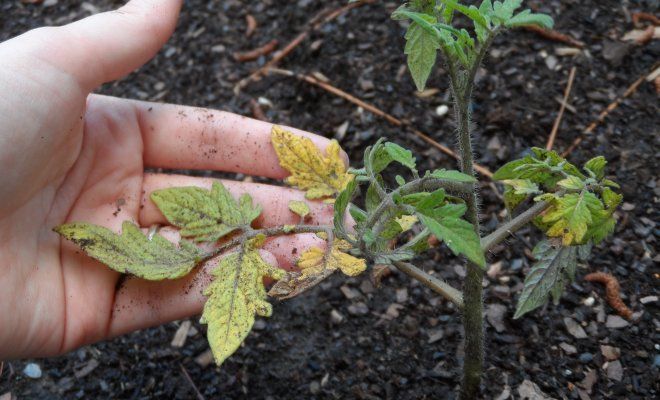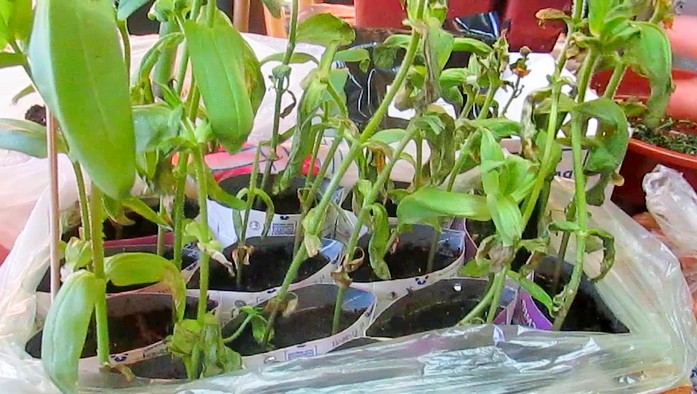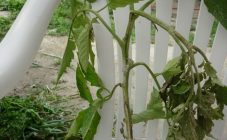Content:
Tomato is an annual plant in the nightshade family native to South America. It came to Europe at the beginning of the 16th century as an ornamental plant. The French began to call him "pomme d'amour" - "The apple of love", considered him an aphrodisiac. The Italians began to call it "pomo d'oro", which means "Golden Apple", most likely, yellow tomatoes were originally used. Italians were the first in Europe to cultivate tomatoes. The tomato is considered a vegetable by the way it is consumed, although botanists have proven that it is a berry. They come in a variety of colors, shapes and tastes.
Tomatoes are grown more often in seedlings. That is, at first, seeds are sown in small containers at home or in a greenhouse, and then they are planted in a permanent place of residence.
Pests
Having grown seedlings and planting them in a greenhouse or on the street, gardeners notice that someone is eating up tomato seedlings, they do not know what to do with this scourge. It is necessary to determine what kind of pests appeared on the plants and immediately destroy them.
All pests can be roughly divided into two groups:
- Overground.
- Underground.
The underground ones have settled in the soil and can eat the roots of plants. Aboveground pests destroy the stem and foliage.
The roots of a tomato can be eaten by a bear, scoop or wireworm.
Medvedka
Medvedka is a distant relative of the locust. Outwardly, she looks like a grasshopper, but not with such long legs. With her front limbs, she, like a shovel, rakes the soil and builds moves. Extremely tenacious and very voracious. Lives in the upper warm soil layer. Devours everything that comes in its way. It can feed on the roots of vegetables and earthworms. Lives in those regions where the soil does not freeze too much in winter. You can identify uninvited guests by the loosened winding hillocks of the earth and by the way healthy plants began to die rapidly. As soon as a bear is found on the site, it will immediately become clear who is gnawing the tomato seedlings.
The bear breeds mainly in the spring. She builds an entire palace for her offspring. Digs many corridors at a depth of no more than ten centimeters. Makes nests about 10 cm, in which the female lays 300-600 eggs. After two weeks, the larvae of the bear - nymphs appear. They grow very quickly, turning into adults.
Control measures
There are the following ways to deal with this pest:
- Corn, wheat, oats are steamed, a little vegetable oil and a special Medvetox agent are added to them. The baits are placed or shallowly buried throughout the site.
- Pickled corn and wheat seeds are planted over the plot.
- The seed is treated with special insecticides.
- Deep loosening of the soil twice a year.
- They make small pits with half-rotted manure, and when cold weather sets in, they scatter the manure over the site. The bear will freeze.
- Destroy nests.
- Place a rope dipped in kerosene on the site.
- The tomato root can be placed in a cylinder from a 5 liter bottle cut on both sides. Thus to make a barrier to the roots of the tomato.
- In the greenhouse, you can bury containers half filled with water. Bears will rush to the liquid, but they will not be able to get out.
Garden scoop
The scoop is a moth-like butterfly. By itself, it is harmless, but the caterpillars that hatched from its larvae are very harmful.During the day, the larvae hide from the sun, and at night they begin to eat up everything. They eat a lot. They gnaw at the roots and stems of seedlings, eat the fruits of tomatoes, make many "moves" in cabbage.
The scoop has three states:
- Butterfly;
- Caterpillar;
- Doll.
Gardeners struggle with each level of maturation in different ways.
Butterfly scoop
- Hanging vessels with kvass, water and syrup at a height of 1 meter.
- Prevent weeds from blooming, nectar is the main food for butterflies.
Caterpillar scoop and pupa scoop
- Autumn plowing, followed by manual harvesting of larvae.
- Insecticide treatment.
- When planting potatoes, add Bazudin to the hole.
- Biological treatment.
Colorado beetle
Everyone knows the enemy of potatoes No. 1 - the Colorado potato beetle. He also does not bypass tomatoes. The female lays eggs on the underside of the leaf, and after a while red larvae appear, eating the leaves of the tomato very quickly. After the larva turns into a young beetle, it begins to eat the fruits.
Control measures
There are the following measures to combat this pest:
- the use of chemicals;
- picking beetles from tomatoes by hand;
- laying out baits in the spring, with further disposal of the crawling out beetles;
- the use of wood ash for planting and pollination during flowering;
- add scented plants to the mulch: wormwood, calendula, marigolds.
Tomato thrips
Adult thrips are no more than two millimeters in length. The colors are brown, gray and black. The larvae are generally white-yellow-greenish in color, which makes it impossible to notice thrips on tomato seedlings at the beginning of the lesion. These pests on tomatoes are located on the underside of the leaf and suck the juice out of it.
If a healthy, strong seedling begins to weaken quickly, it has yellow pigmentation, an openwork mesh appears on the leaves, it is worth inspecting the plant, which will help to detect thrips on tomatoes or not. If they are seen on tomatoes, action must be taken immediately. Tomato seedlings from greenhouses and greenhouses must be immediately eliminated. Replace the soil or spill with boiling water. It will not be superfluous to cover the top with a layer of plastic wrap for better steaming. Neighboring plants need pest control.
When fighting thrips, the following drugs are effective:
- Actellic. 1 ampoule / 1 liter of water.
- Fitoverm. 5 ml / 500 ml water;
- Agravertine. 10 ml / 1 l of water;
- Karbofos. 7 g / 1 l of water.
Whitefly
Whitefly is a small butterfly, no more than three millimeters in size, which likes to settle on the underside of tomato leaves. She lays eggs there, from which larvae emerge. Having attached to the leaf, the gluttonous creatures feed on the sap of the plant.
But they do much more harm with their feces, in the place of which sooty mushrooms subsequently appear.
You can determine the presence of whitefly on tomatoes by the following criteria:
- leaves have spots of yellow, brownish or black;
- shiny spots on the leaves;
- the leaves curl up and wither;
- small white butterflies fly out of the bushes;
- slow ripening of tomatoes, white streaks are present when the fruit is cut.
This pest can live not only in the country. It can fly into the apartment through an open window and cause damage to tomato seedlings and other plants.
How to fight
There are several ways to get rid of whitefly:
- Hang up sticky tape for catching flies.
- Apply a layer of petroleum jelly or castor oil on light cardboard. For a sweet aroma, add some honey. Lay out the baits on the beds with tomatoes.
- Processing tomato leaves with yarrow infusion (80 g / 1 l of boiling water);
- Garlic tincture processing.
- Processing with a solution of laundry soap (One part of soap shavings to six parts of water).
- Application of chemicals (Boverin, Pegasus, Aktara, Tanrek).
- Treatment with a solution of flea shampoo and water.
Khrushch
Everyone knows the May beetle. It begins its activity in May (hence the name), at the same time the female lays eggs. After a month and a half, rather large larvae appear. They live 3-4 years in the ground before growing into an adult. At this time, they feed on the roots of various plants, including tomatoes, thereby causing great harm.
Control methods
You can get rid of the crumb like this:
- Collect by hand.
- Watering with infusion of onion peel.
- Mulching the soil.
- Sod the soil. Best of all with clover.
- Sprinkle with nitrogen-containing fertilizers in spring.
Diseases of tomatoes
All butterflies, bugs and larvae carry various diseases and fungi from one plant to another.
Late blight
The causative agent is a fungus. Brown spots appear on the leaves and fruits, which subsequently cover all fruits.
Control measures:
- processing the plant with infusion of garlic;
- bordeaux liquid;
- salt solution.
Brown leaf spot
The causative agent is fungus. The fungus spreads in the form of brown spots on the leaves and stem of tomatoes. Plants in the greenhouse are more often susceptible to this disease, there are suitable conditions for the fungus.
Control measures:
- change of soil in the greenhouse;
- incineration of all plant waste;
- processing of tomatoes with Fundazol and Fitosporin;
Macrosporiasis
The fungus infects the leaves and stem. The leaves curl and dry up, then the stems also dry up.
Control measures:
- soapy solution;
- the affected tops must be cut off and burned.
Blackleg
The base of the seedling stem rot and the plant dies. If you use home soil from the garden, you can bring in the causative agents of this disease. The soil must be disinfected before use.
Control measures:
- moderate watering;
- treatment with manganese solution;
- seedlings should be planted more freely.
Vertex rot
Round brown spots appear on the tops of the fruits, the tomato softens and rots. The disease appears at high air temperature and low humidity, as well as with a lack of calcium.
Knowing the diseases and pests of tomatoes, with a timely fight against them, you can grow a rich harvest.
